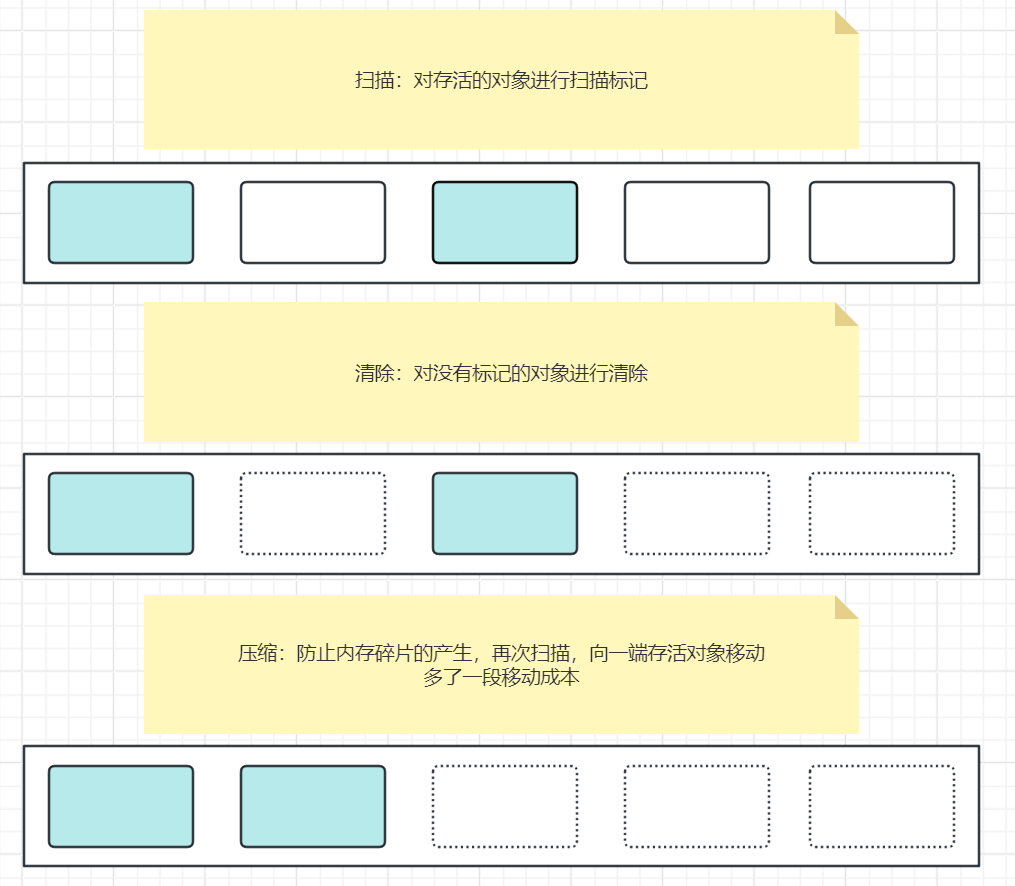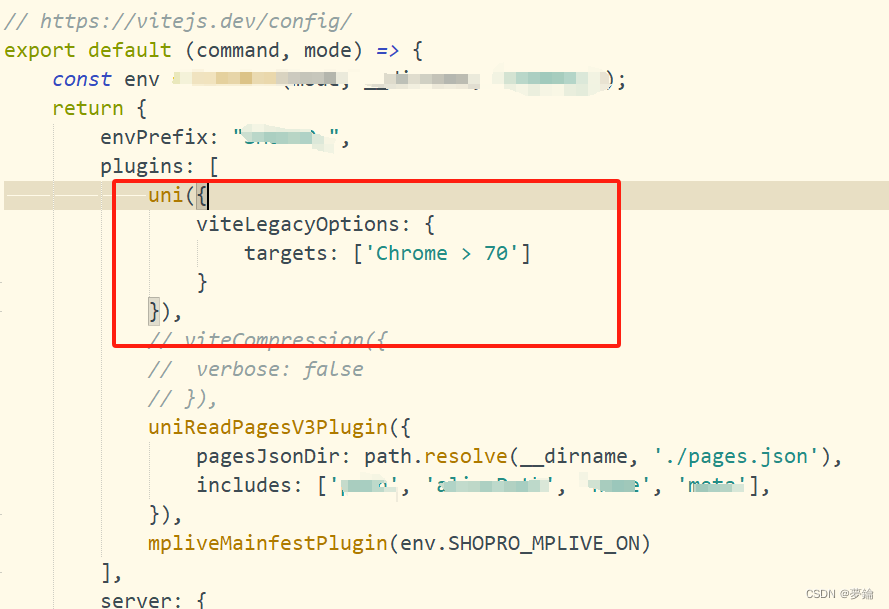文章目录
list_2">list
介绍
list:
是数据结构中的链表,存储方式是在内存中每一个节点取一段空间用特定的方式链接起来,这样子就不会有浪费的空间
我们用的是带头循环双向链表
listNode_7">节点类(listNode)
因为一个节点中要包含其他信息所以单独弄成一个类
template<class T>
//链表节点类
struct listNode
{
listNode<T>* _next;//指向下一个节点
listNode<T>* _prev;//指向上一个节点
T date;//内容
listNode(const T& x = T())
:_next(nullptr)
,_prev(nullptr)
,date(x)
{}
};
list__iterator_26">__list__iterator(迭代器类)
为什么要有迭代器类呢?
因为我们要封装一下这个迭代器,让迭代器该有的操作在list也可以用出来。
如果在list内部弄迭代器会很不好弄。
//正向迭代器类
//Ref 来区别const和普通
template<class T,class Ref,class Ptr>
struct __list__iterator
{
typedef listNode<T> Node;//减少代码
typedef __list__iterator<T,Ref> self;//来控制他的类别
Node* _node;//节点
__list__iterator(Node* node)
:_node(node)
{}
//++it
self& operator++()
{
_node = _node->_next;
return *this;
}
//it++
self& operator++(int)
{
self tmp(*this);
_node = _node->_next;
return tmp;
}
self& operator--()
{
_node= _node->_prev;
return *this;
}
self& operator--(int)
{
self tmp(*this);
_node = _node->_prev;
return tmp;
}
Ref operator*()
{
return _node->date;
}
bool operator!=(const self& s)
{
return _node != s._node;
}
bool operator==(const self& s)
{
return _node == s._node;
}
Ptr operator->()
{
return &_node->date;
}
};
operator->
因为这个比较特殊很难看懂所以我们单独解释
他的本质是->->,代码解释更好看懂
因为之前的设计者觉得不好看,所以做的特殊处理
struct MyStruct
{
int _a1;
int _a2;
MyStruct(int _a1 = 1, int _a2 = 1)
:_a1(_a1)
,_a2(_a2)
{
}
};
void test2()
{
list<MyStruct> s;
s.push_back(MyStruct());
s.push_back(MyStruct());
s.push_back(MyStruct());//插入的是一个类
list<MyStruct>::iterator lt = s.begin();
while (lt != s.end())
{
cout << lt->_a1<<":"<< lt->_a2 << " ";//读这个类里面的内容
//lt->_a1 的本质是 lt.operator->()->_a1; 特殊处理
++lt;
}
}
list_118">list的成员函数
因为我们偷点懒所以把一些东西typedef一下
typedef listNode<T> Node;
typedef __list__iterator<T,T&,T*> iterator;
typedef __list__iterator<T,const T&,const T*> const_iterator;
typedef Reverselterator<T, T&, T*> reverse_iterator;
empty_init() 初始化节点
因为我们要多次用到所以单独写一个出来方便
同时可以用list()套一下他
void empty_init()//初始化节点
{
_head = new Node;
_head->_next = _head;
_head->_prev = _head;
}
listlistT_lt__139">list(list& lt) 拷贝构造
简单写法
引用的作用是深拷贝,不要弄成浅拷贝了
list(list<T>& lt)
{
empty_init();
for (const auto& ch : lt)
{
push_back(ch);
}
}
clear() 清除链表
直接把链表清空
void clear()
{
iterator it = begin();
while (it != end())
{
it = erase(it);
}
}
list__165">~list() 析构
清除之后直接把哨兵位删掉就可以了
~list()
{
clear();
delete _head;
}
insert() 插入
在某个节点之前插入
iterator insert(iterator pos, const T& x)//在摸个节点之前插入
{
Node* cur = pos._node;//插入的位置
Node* prev = cur->_prev;//插入的下一个位置
Node* newnode = new Node(x);//构成节点
prev->_next = newnode;
newnode->_prev = prev;
newnode->_next = cur;
cur->_prev = newnode;
return newnode;
}
erase() 删除
删除某个节点
iterator erase(iterator pos)
{
assert(pos !=end());//判断他不是哨兵位
Node* cur = pos._node;
Node* prev = cur->_prev;
Node* next = cur->_next;
prev->_next = next;
next->_prev = prev;
delete cur;
return next;
}
push_back() 尾插
注释这段因为和insert中基本上没区别,所以简单化了
void push_back(const T& x)//尾插
{
/*Node* newnode = new Node(x);
Node* tail = _head->_prev;//链表尾部节点
tail->_next = newnode;
newnode->_prev = tail;
newnode->_next = _head;
_head->_prev = newnode;*/
insert(end(), x);
}
push_front() 头插
void push_front(const T& x)//头插
{
insert(begin(), x);
}
pop_back() 尾删
void pop_back()//尾删
{
erase(--end());
}
pop_front() 头删
void pop_front()//头删
{
erase(begin());
}
begin() 头节点
这里因为是要头节点,所以我们直接把begin设置为第一个节点(有用的节点)
const_iterator begin() const
{
return _head->_next;
}
end() 尾节点
因为end是尾 所以我们把哨兵位当尾,这样子就可以更好的读
const_iterator end() const
{
return _head;
}
总结
可以先尝试一下 自己实现
代码总体加我自己的注释给在这里
实现完可以自己对比一下
template<class T>
//链表节点类
struct listNode
{
listNode<T>* _next;
listNode<T>* _prev;
T date;
listNode(const T& x = T())
:_next(nullptr)
,_prev(nullptr)
,date(x)
{}
};
//正向迭代器类
//Ref 来区别const和普通
template<class T,class Ref,class Ptr>
struct __list__iterator
{
typedef listNode<T> Node;
typedef __list__iterator<T,Ref> self;
Node* _node;
__list__iterator(Node* node)
:_node(node)
{}
//++it
self& operator++()
{
_node = _node->_next;
return *this;
}
//it++
self& operator++(int)
{
self tmp(*this);
_node = _node->_next;
return tmp;
}
self& operator--()
{
_node= _node->_prev;
return *this;
}
self& operator--(int)
{
self tmp(*this);
_node = _node->_prev;
return tmp;
}
Ref operator*()
{
return _node->date;
}
bool operator!=(const self& s)
{
return _node != s._node;
}
bool operator==(const self& s)
{
return _node == s._node;
}
Ptr operator->()
{
return &_node->date;
}
};
template<class T>
class list
{
typedef listNode<T> Node;
public:
typedef __list__iterator<T,T&,T*> iterator;
typedef __list__iterator<T,const T&,const T*> const_iterator;
typedef Reverselterator<T, T&, T*> reverse_iterator;
const_iterator begin() const
{
return _head->_next;
}
const_iterator end() const
{
return _head;
}
iterator begin()
{
//return iterator(_head->_next);
return _head->_next;
}
iterator end()
{
//return iterator(_head);
return _head;
}
iterator rbegin()
{
return end();
}
iterator rend()
{
return begin();
}
void empty_init()//初始化节点
{
_head = new Node;
_head->_next = _head;
_head->_prev = _head;
}
list()
{
empty_init();
}
list(list<T>& lt)
{
empty_init();
for (const auto& ch : lt)
{
push_back(ch);
}
}
~list()
{
clear();
delete _head;
}
void clear()
{
iterator it = begin();
while (it != end())
{
it = erase(it);
}
}
void swap(list<T>& lt)
{
std::swap(_head, lt._head);
}
list<T>& operator=(list<T> lt)
{
swap(lt);
return *this;
}
void push_back(const T& x)//尾插
{
/*Node* newnode = new Node(x);
Node* tail = _head->_prev;//链表尾部节点
tail->_next = newnode;
newnode->_prev = tail;
newnode->_next = _head;
_head->_prev = newnode;*/
insert(end(), x);
}
void push_front(const T& x)//头插
{
insert(begin(), x);
}
void pop_back()//尾删
{
erase(--end());
}
void pop_front()//头删
{
erase(begin());
}
iterator insert(iterator pos, const T& x)//在摸个节点之前插入
{
Node* cur = pos._node;
Node* prev = cur->_prev;
Node* newnode = new Node(x);
prev->_next = newnode;
newnode->_prev = prev;
newnode->_next = cur;
cur->_prev = newnode;
return newnode;
}
iterator erase(iterator pos)
{
assert(pos !=end());
Node* cur = pos._node;
Node* prev = cur->_prev;
Node* next = cur->_next;
prev->_next = next;
next->_prev = prev;
delete cur;
return next;
}
private:
Node* _head;//哨兵位
};





![[云原生] K8s之pod控制器详解](https://img-blog.csdnimg.cn/direct/140b5e8f5ada48bd844a0f7d1ed95e0c.png)